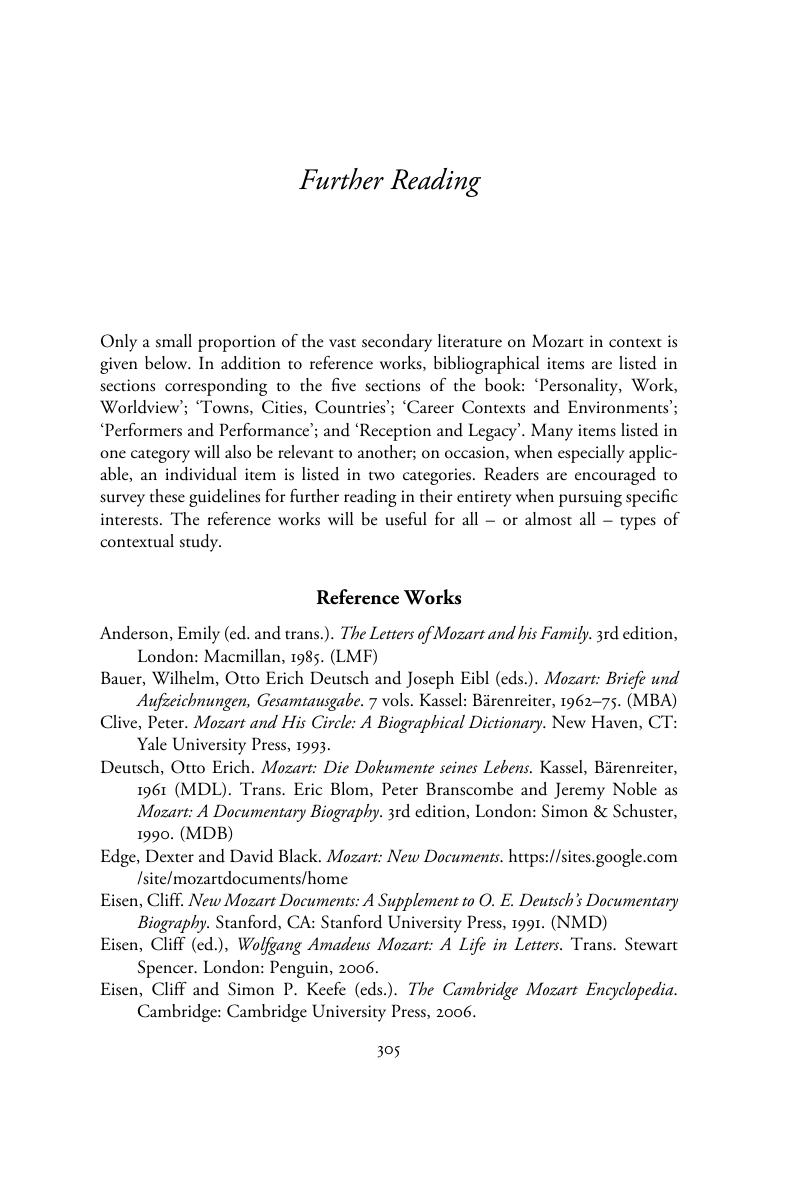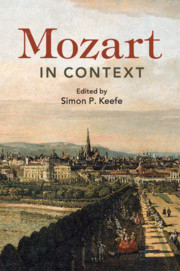Book contents
- Mozart in Context
- Composers in Context
- Mozart in Context
- Copyright page
- Contents
- Illustrations
- Tables
- Musical Examples
- Preface
- Contributors
- Abbreviations
- Part I Personality, Work, Worldview
- Part II Towns, Cities, Countries
- Part III Career Contexts and Environments
- Part IV Performers and Performance
- Part V Reception and Legacy
- Further Reading
- Index of Mozart’s Works by Köchel Number
- Index of Mozart’s Works by Genre
- General Index
- References
Further Reading
Published online by Cambridge University Press: 13 December 2018
- Mozart in Context
- Composers in Context
- Mozart in Context
- Copyright page
- Contents
- Illustrations
- Tables
- Musical Examples
- Preface
- Contributors
- Abbreviations
- Part I Personality, Work, Worldview
- Part II Towns, Cities, Countries
- Part III Career Contexts and Environments
- Part IV Performers and Performance
- Part V Reception and Legacy
- Further Reading
- Index of Mozart’s Works by Köchel Number
- Index of Mozart’s Works by Genre
- General Index
- References
Summary

- Type
- Chapter
- Information
- Mozart in Context , pp. 305 - 317Publisher: Cambridge University PressPrint publication year: 2018



